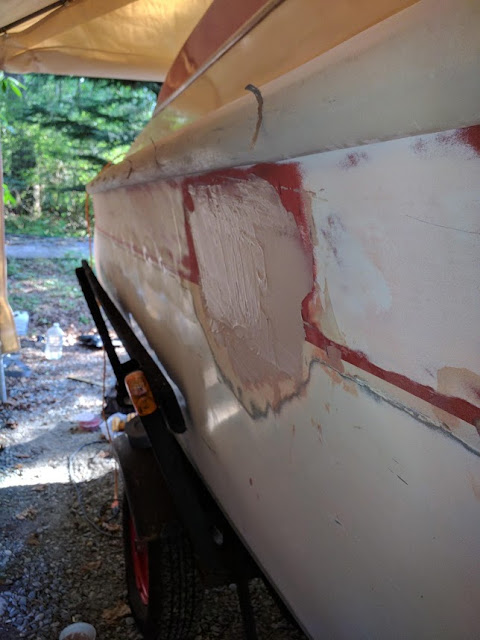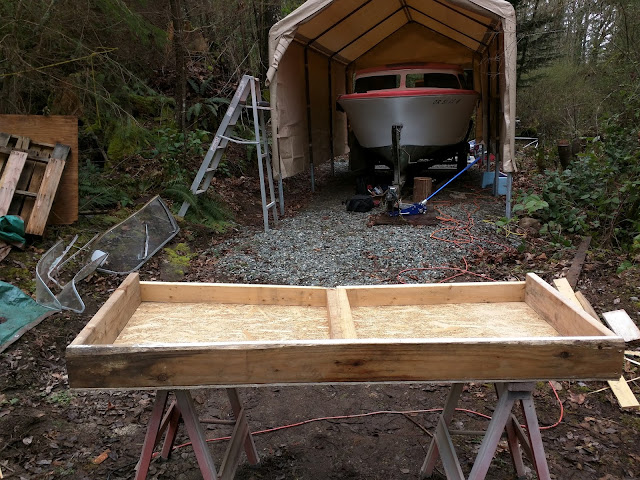Interior Refurbishing

When I began this project in late 2017 my first priority was to rebuild the transom so I could get it on the water the next summer and evaluate my suitability to motor boating. Even then I was thinking of project phases (yes, I was a project manager for part of my career). After the transom, Phase 2 would be getting the outside of the boat presentable, which I did in 2018-19. It turns out there was a Phase 2a, which involved troubleshooting and fixing the outboard, which came very close to stranding me. Twice. Phase 3, which I began in October 2019, was to get the interior looking decent. I'll document that process below, probably in more detail than most want to read. I started this blog as a potential resource for those contemplating or beginning a similar restoration. I hope it will be of some use in that regard. Interior of the Offshore when I first looked at it in the fall of 2017. The Skagit 20' Offshore model was apparently not very popular. Product...


